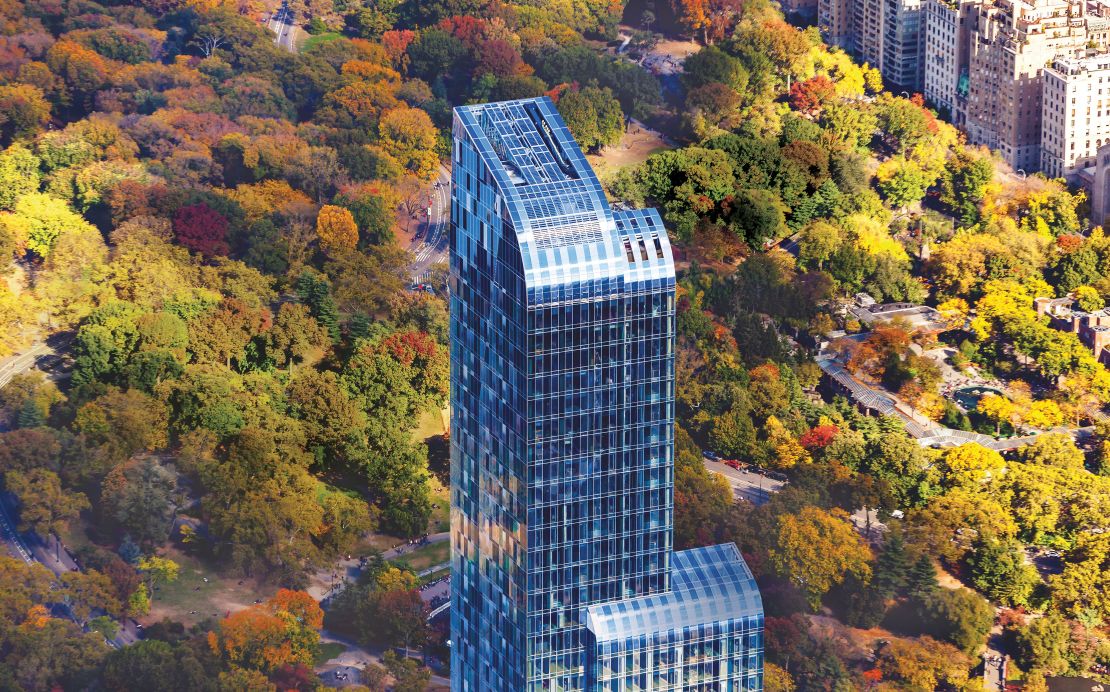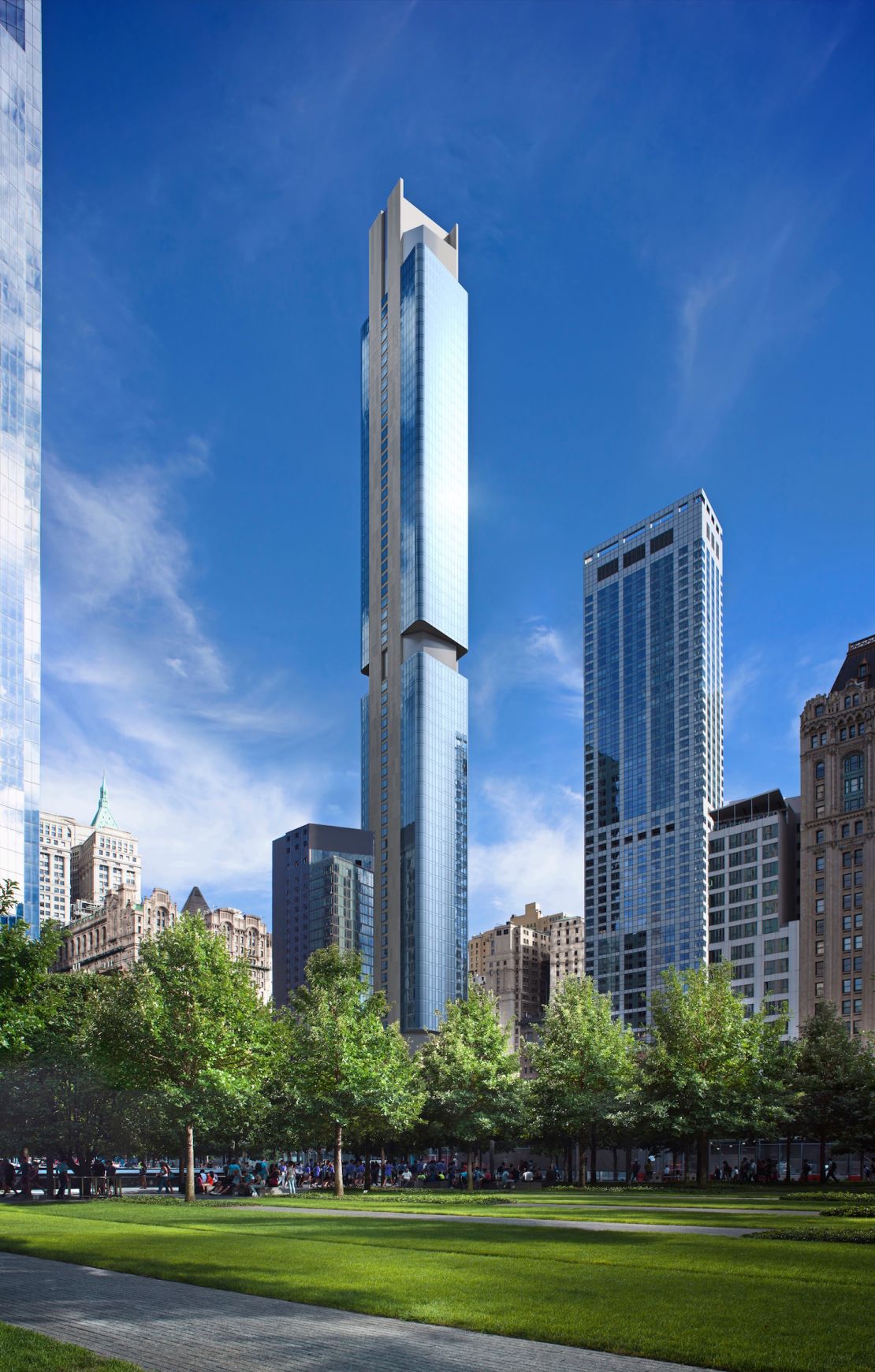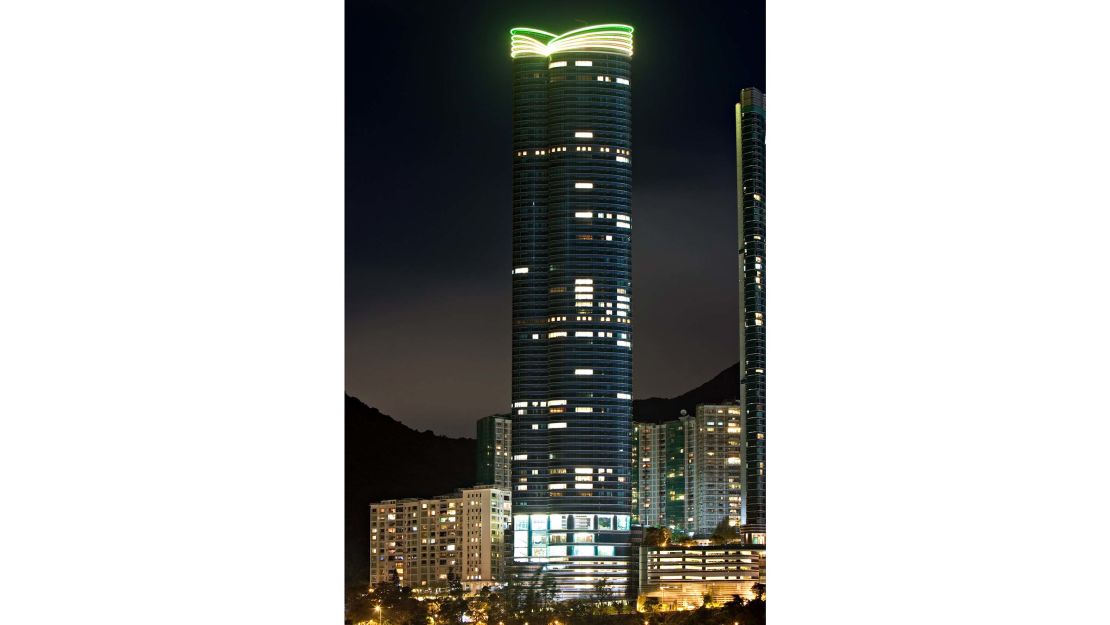The Empire State Building, the Art Deco Chrysler Building, the super-tall One World Trade Center. New York City is home to some of the world’s most iconic skyscrapers.
But the buildings entering its famous skyline today are doing something unusual. They’re getting skinnier.

Take 111W57 on 111 West 57th Street. Upon completion in 2019, the 1,428-foot-tall (435-meter-tall) building in Midtown Manhattan will not only offer unobstructed views of Central Park, it will also be the slenderest skyscraper in the world, with a width-to-height ratio of 1:24.
Russia, meanwhile, is building its first supertall skinny skyscraper also in Midtown. Moscow-based architectural firm Meganom’s “shelves in the air” will top out at 1,010 feet (308 meters) at 262 Fifth Avenue and boast a slenderness ratio of 1:20.
Both buildings are part of a tribe of slender climbers sticking their skinny necks into the city’s architectural conversation.
What is a slender skyscraper?
Slenderness is not in the eye of the beholder when it comes to skyscrapers, at least. In this field, it is a technical engineering term. Whether it can be applied to a building is determined by the structure’s base width to height ratio, according to Carol Willis, an architectural historian and founder of the Skyscraper Museum in New York City.
“Structural engineers generally consider skyscrapers with a minimum 1:10 or 1:12 ratio to be slender,” Willis says.
In 2013/2014, the Skyscraper Museum museum presented its “Sky High & the Logic of Luxury” exhibition, documenting the rise of skinny structures in Manhattan. Slender buildings featured in the show included the 1,396-foot-tall (425.5-meter-tall) 432 Park Avenue; One57 aka “The Billionaire Building;” and the distinctive “stacked homes” 56 Leonard tower.
“New York’s slender buildings are unique as a development in skyscraper history – they’re different to simply tall buildings,” Willis says, adding that when deciding which skyscrapers to include in the show her team “accepted the slenderness ratios provided by their engineers.”
Determining a building’s slenderness ratio is often not a precise science, she cautioned: “Exact slenderness ratios are difficult to calculate because the bases and shafts are often very different widths as the buildings rise.”
Why slim down?
So when did developers start slimming down their skyscrapers – and why?
Willis says the “engineering and development strategies of slenderness were first seen in around 2007.” She pinpoints luxury residential condominiums One Madison Park, on Broadway and Park Avenue, and Sky House, between Fifth Avenue and Madison Avenue, as the first “slenders” to have cropped up in New York.

Complex zoning laws in the city were a motivating factor, Willis explains. While such regulations restrict the amount of land that can be built on within an area, a loophole allows for the transference of “air rights” from one plot to another. So developers could buy a small parcel of land, then buy air rights from adjacent plots and stack these to gain permission to build a tall tower. For example, if an existing building is shorter than its maximum allowed height then the developer of a new adjacent property could purchase the unused air rights, and stack them to the air rights of their existing plot – such a transaction is called a “zoning lot merger.”

Technological advancements also contributed to the rise of the skinnies.
“Over the past decade, advances in materials and engineering have made building ‘supertalls’ possible, specifically those with smaller footprints,” says Jonathan Miller, president and CEO of New York real estate consultancy Miller Samuel. Towers between 980 feet (300 meters) and 2,000 feet (600 meters) high fall into the “supertall” category.
Standing out from the crowd
While developers typically strive primarily for return on investment, they often also want to create a structure unique enough to get the market’s attention, says Miller. Slender designs, which come in all shapes and sizes, tick that box.
The world's tallest buildings
Take 111 Murray Street, in Tribeca, which will feature a curved, glass exterior and boast access to luxurious amenities including a concierge private jet service. Or 125 Greenwich Street, designed by award-winning architect Rafael Viñoly: the structure is supported by two beams that act as the framework of the building, resulting in minimal use of columns and more space in the interiors. Meanwhile, the 800-foot-tall (244-meter-tall) 130 William tower in lower Manhattan, by architect David Adjaye, will forgo a glass façade altogether in favor of stone and masonry, materials that pay homage to the history of the street it’s located on.

“They are competing with other developers to stand out. The stakes are high financially, so design becomes a big part of the effort,” says Miller.
Tall, skinny and good looking
Though the slenderness of a building is not defined by its height, slender towers do tend to be tall – the “runway models” of the real estate world.
“Out of my window I can see one of these slender towers, which is 60 stories tall,” Willis says. “The 30 stories at the top have an uninterrupted view of the skyline. So you’re just setting the bar higher … raising someone’s neck, head and eyes above a crowd. “It lends a level of prestige that people are willing to pay additional money for.”
Miller agrees. “In many cases this new generation are nearly twice as tall as the prior generation, going from 50 stories to nearly 100 stories, yet sitting on a much smaller footprint.”
Supertall slenders can increase the desirability of their neighborhoods. “As a new class of building, they are not always in (traditionally) premier locations – in fact, their tallness is often used to ‘blaze a trail’ in an untested residential location,” says Miller.
He cites “Billionaires’ Row”, on 57th Street in Manhattan – home to many slenders – as an example.
“It is the central business district and (previously) not known for residential luxury buildings. The introduction of supertalls helped this location morph into a new identity as ‘Billionaires’ Row.’”
Setting an example?
New York is not the only place with a taste for slender skyscrapers.
In 2003, the 828-foot-tall (252-meter-tall), 75-story luxury residential tower Highcliff was opened in Hong Kong – a city that, along with New York, has one of the most expensive real estate markets in the world, and a distinct lack of space on which to build. Highcliff has a slenderness ratio of 1:20. Upon completion, its developers claimed it was the slenderest residential property in the world.

Meanwhile, the 73-story Elysium Melbourne – which measures just 12 meters wide at its narrowest point – is set to become that Australian city’s tallest and slimmest building. Its construction has been approved, although the completion date has yet to be confirmed.
In Sao Paulo, Brazil, AIR Madalena is a decidedly skinny residential property – the 12 story building has a façade that is narrower than the average single-car garage.
It remains to be seen how long skinny stays in style.











































